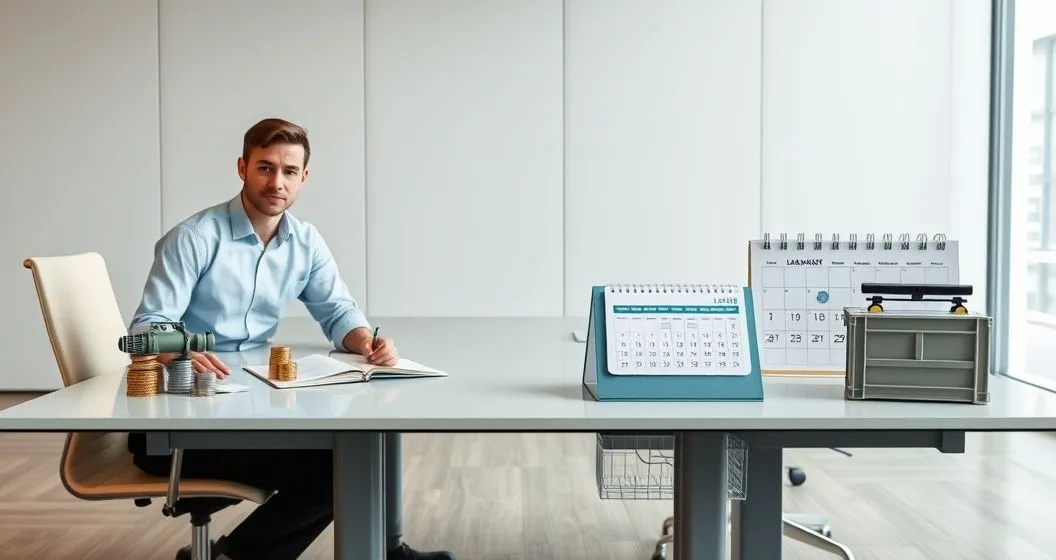Quick summary
Equipment financing (an equipment loan) lets you own the asset and repay over time; leasing lets you use the asset for a term with lower upfront cost but different tax and end-of-term outcomes. Which is better depends on cash flow, how long you’ll keep the equipment, tax strategy, and whether technology risk (obsolescence) or maintenance risk matters.
Cost comparison: what you pay now and over time
- Upfront costs: Financing usually requires a down payment, taxes, and registration (for vehicles). Leasing often needs a smaller initial payment or only first month’s rent.
- Monthly payments: Lease payments tend to be lower because you’re paying for depreciation during the lease term plus rent and fees. Loan payments cover principal and interest and are typically higher, but you gain ownership.
- Total cost: Over a long ownership horizon, buying (financing) often costs less than repeated leases because you capture residual value. Short-term use or frequent upgrades can make leasing cheaper in practice.
Example: A $50,000 machine financed over five years with a market-rate interest may have higher monthly payments than a 3-year lease on the same machine. But after five years you own the machine and can keep using it or sell it for residual value.
Tax implications (current law through 2025 — confirm with a CPA)
- Ownership (financing): If you buy equipment, you generally recover cost through depreciation and may deduct interest on the loan. Small businesses can often use Section 179 expensing to deduct qualifying equipment cost in the year placed in service and may also be eligible for bonus depreciation — note bonus depreciation rules are phased under current law, so the benefit changes year to year (see IRS Publication 946 and the Section 179 guidance) (IRS.gov).
- Leasing: True operating lease payments are typically deductible as a business expense, which simplifies tax reporting because you deduct the full lease payment in the period paid. If a lease is treated as a finance/capital lease for tax or GAAP purposes, it will be treated like a purchase, affecting depreciation and interest deduction. Always confirm the lease classification and tax treatment with your CPA (IRS.gov; see guidance on depreciation and lease treatment).
Authoritative sources: IRS Publication 946 (How to Depreciate Property) and the Section 179 information pages on IRS.gov; also consult the Consumer Financial Protection Bureau for leasing basics and borrower protections (IRS.gov, CFPB).
Flexibility, risk, and operational considerations
- Obsolescence and upgrades: Leasing is often preferable for fast-changing tech because it’s easier to upgrade at lease-end. In my practice advising small businesses, tech and medical practices choose leases to avoid owning quickly obsolete assets.
- Maintenance and uptime: Some leases bundle maintenance or service; owning means you’re responsible for repairs unless covered by warranty or service contract.
- Balance sheet and cash flow: Operating leases may keep liabilities off certain balance sheet metrics (depending on accounting rules and lease classification) and preserve cash; financing increases assets and liabilities but builds equity in the asset.
Which option tends to make sense?
-
Choose financing if:
-
You plan to use the equipment for most of its useful life.
-
You want to claim depreciation or use Section 179 to reduce taxable income.
-
You want to build equity and eventually sell or trade the equipment.
-
Choose leasing if:
-
You need low upfront cost and predictable, lower monthly payments.
-
You expect to upgrade before useful life ends (technology or vehicles).
-
You prefer operational simplicity and potentially included maintenance.
How to evaluate an offer (practical checklist)
- Compare the total cost of ownership vs. total lease cost over a comparable period (include fees and taxes).
- Ask for the Annual Percentage Rate (APR) or effective interest for loans and the money factor or effective rate for leases.
- Confirm end-of-term options and residual value for leases; check purchase price, penalties for wear/overuse, and early termination fees.
- Confirm tax treatment with your CPA — especially for large purchases where Section 179 or bonus depreciation might apply.
- Check who pays insurance, maintenance, and registration.
- Read the fine print for fees: origination fees, documentation fees, sales tax treatment, and any prepayment penalties.
Real-world examples (short)
- Manufacturing buyer: A manufacturer that uses a CNC machine daily and plans to keep it 7–10 years financed the purchase to capture depreciation and eventual resale value.
- Tech startup: A SaaS startup leased laptops and servers on short terms to preserve cash and swap hardware more frequently.
Common mistakes to avoid
- Focusing only on monthly payment without calculating total cost.
- Assuming lease payments are always deductible the same way as loan interest — classification matters.
- Ignoring residual values, end-of-term wear-and-tear charges, or bundled fees.
Where to learn more on FinHelp
- Deep dive on getting equipment financing: Equipment Financing 101 for Small Businesses
- Tax and cash-flow specifics comparing options: Equipment Financing vs Leasing: Tax and Cash Flow Considerations
Final notes and disclaimer
In my practice working with small businesses I regularly recommend building a total-cost model that includes tax effects, maintenance, and residual value before deciding. This article is educational and not individualized tax or legal advice. Consult a CPA or financial advisor for decisions tailored to your business and to confirm current tax rules (see IRS.gov and the Consumer Financial Protection Bureau at consumerfinance.gov).
Sources:
- IRS Publication 946, How to Depreciate Property (IRS.gov)
- IRS Section 179 information (IRS.gov)
- Consumer Financial Protection Bureau — Leasing basics (consumerfinance.gov)



